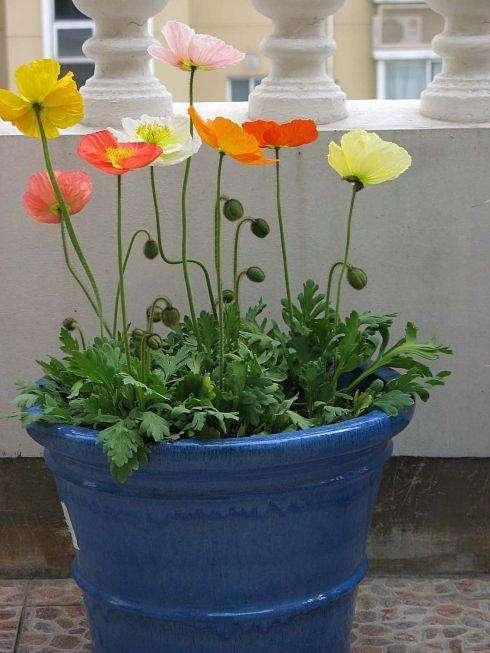How to maintain the beauty of Yu
Guidelines for the preservation of hydrogen sulfide for cosmetic control
"hydrogen sulfide treatment" is used to protect cosmetic therapy.
Yu Mei is also known as Peony, Entertainment Beauty, Hydrangea, quilt, Butterfly and Garden. When the flower is not open, the bud is egg-shaped, there are two bracts outside, the bracts are green and the edges are white. Peduncle slender erect, slightly lower, with 4 petals and a strange flower. Du Fu wrote a poem: "the competition of herbs in spring flowers, Lichun should win the most." the picture shows potted plants.

1. Monitoring function
The beauty of beauty is mainly to detect hydrogen sulfide. Once the air contains hydrogen sulfide gas, even on the buds, Yu Mei's leaves will be scorched and spotted.
two。 Maintenance guide
(1) Lighting Yu Xixi,
(2) temperature beauty is afraid of heat, but it has a certain degree of cold resistance. It prefers a warm environment. The temperature should be controlled at 15-28 °C. In winter, it will enter a dormant period.
(3) watering potted plants for 3-5 days usually does not need too much water. During the growth period, that is, around spring, watering times can be increased, soil moisture can be maintained, and water can be avoided. Winter is a dormant period, as long as the soil is not too dry, watering can not be frequent.
(4) the beauty of fertilizers is suitable for fertile soil. During the growth period, it should be applied every 2-3 weeks. Fertilizers are used five times in mature urine and once before flowering.
(5) breeding generally speaking, Yumei is suitable for reproduction by sowing and can be planted in spring and autumn.
Topping when a beautiful woman's seedlings have 6-7 leaves, they should be topped in order to branch the seedlings. If you leave no seeds, cut off the unfinished flowers during flowering to ensure the nutrition of the plant, which will make the flowers more vivid and extend the flowers after flowering.
(7) the flowers are beautifully arranged and the flowers are bright and beautiful. The beauty of family potted plants is suitable for bright and ventilated places such as living room, balcony, windowsill and so on. It can also be put in the living room, study and dining room. [Jishan Huayao]
How to cultivate and maintain canna?
How to cultivate and maintain canna?
Canna is a perennial bulbous herb. Can grow to 100~150cm, the rhizome is fat; the aboveground stem is fleshy, not branched. Stems and leaves broad, oblong-lanceolate or broadly elliptic. The raceme starts from the top of the stem, with straight petals and 4 stamen petals. There are many colors, such as milky white, bright yellow, orange, orange, pink and so on.
1. Hydroponic method
(1) method 1 excavate the soil seedlings of canna, remove the decaying parts of the roots and old roots, and sterilize them in 0.05% UV 0.1% potassium permanganate solution for about 10 minutes. After washing, plant them in transparent containers and inject them into containers. Clear water to root system 2 stroke 3. Change the water every 2-3 days, it is easy to take root, hydroponic root can grow in about 10 days. As shown in the picture, water plug canna.
(2) method 2: dig out the banana root and divide it into small pieces, each piece with 2-3 eyes and a small amount of fiber root, rinse the root, then plant it in a hydroponic container and change the water once every 2-3 days. Water bacon can be planted after 2 weeks.
two。 Maintenance guide
(1) when planting under light and temperature, the plant should be placed in a cool and ventilated place to prolong the flowering period. Plants can blossom all the year round, and the annual temperature is higher than 16 °C. When the temperature is lower than 16 °C, the growth is slow or even dormant. The room temperature is not less than 7 °C in winter and is safe in winter. In winter, it should be placed in an area with plenty of light, the room temperature should be kept above 7 °C, it can survive the winter safely, and less than 7 °C, it is vulnerable to freezing injury.
(2) after hydroponic culture of fertilized canna (Canna indica), it is easy to produce new roots, and the lateral roots occur quickly. After 2-3 weeks, strong growth potential began to appear. At this point, it can replace the use of nutrient solution, and the scattered light is sufficient to maintain. Because it is very resistant to fat and moisture, it should be noted that appropriate nutrients should be added every week and replaced every 3 weeks.
(3) watering in summer, avoid the sun, and often spray water on the leaves, otherwise the edges of the leaves will be dry and yellow.
Time: 2019-05-16 Click:
- Prev

How to shape the bonsai of Cryptomeria fortunei
Two-pole southern fir bonsai culture AraucariacunninghamiiSweet, trees, in origin up to 60-70 m long, DBH more than 1 m, bark grayish brown or dark gray, thick, transversely lobed; big branches flat or obliquely extended, young crown pointed, old branches flat
- Next

Culture methods and matters needing attention of green flowers and seven-leaf lotus
The medicinal value of seven-leaf lotus is very good. It is also a very good foliage plant. It is planted in many places and its value is very good. How about reproduction? The following is the editor who introduces the seven-leaf lotus to you. Breeding methods and points for attention, I hope to be helpful to all of you.
Related
- Fuxing push coffee new agricultural production and marketing class: lack of small-scale processing plants
- Jujube rice field leisure farm deep ploughing Yilan for five years to create a space for organic food and play
- Nongyu Farm-A trial of organic papaya for brave women with advanced technology
- Four points for attention in the prevention and control of diseases and insect pests of edible fungi
- How to add nutrient solution to Edible Fungi
- Is there any good way to control edible fungus mites?
- Open Inoculation Technology of Edible Fungi
- Is there any clever way to use fertilizer for edible fungus in winter?
- What agents are used to kill the pathogens of edible fungi in the mushroom shed?
- Rapid drying of Edible Fungi

